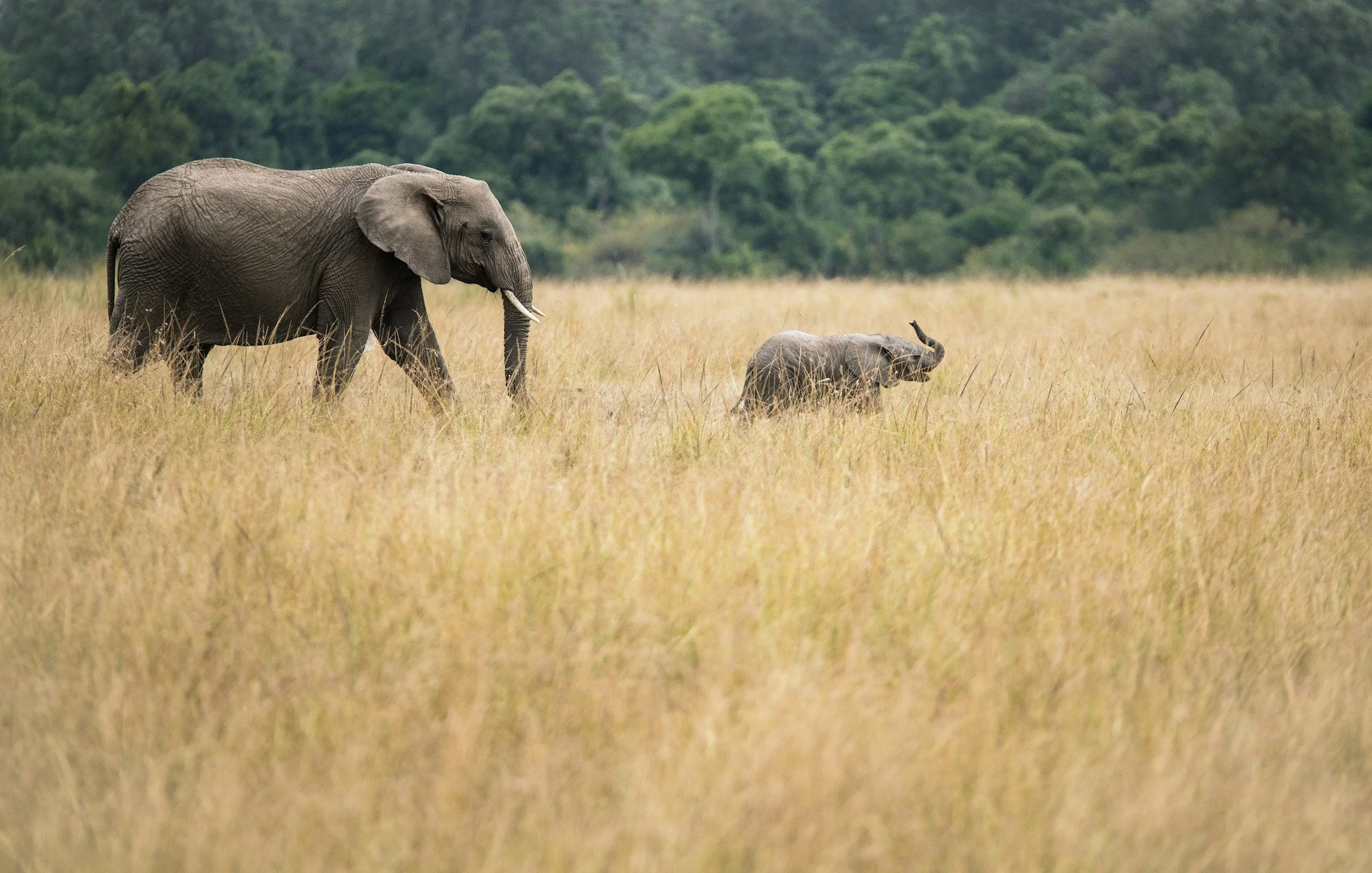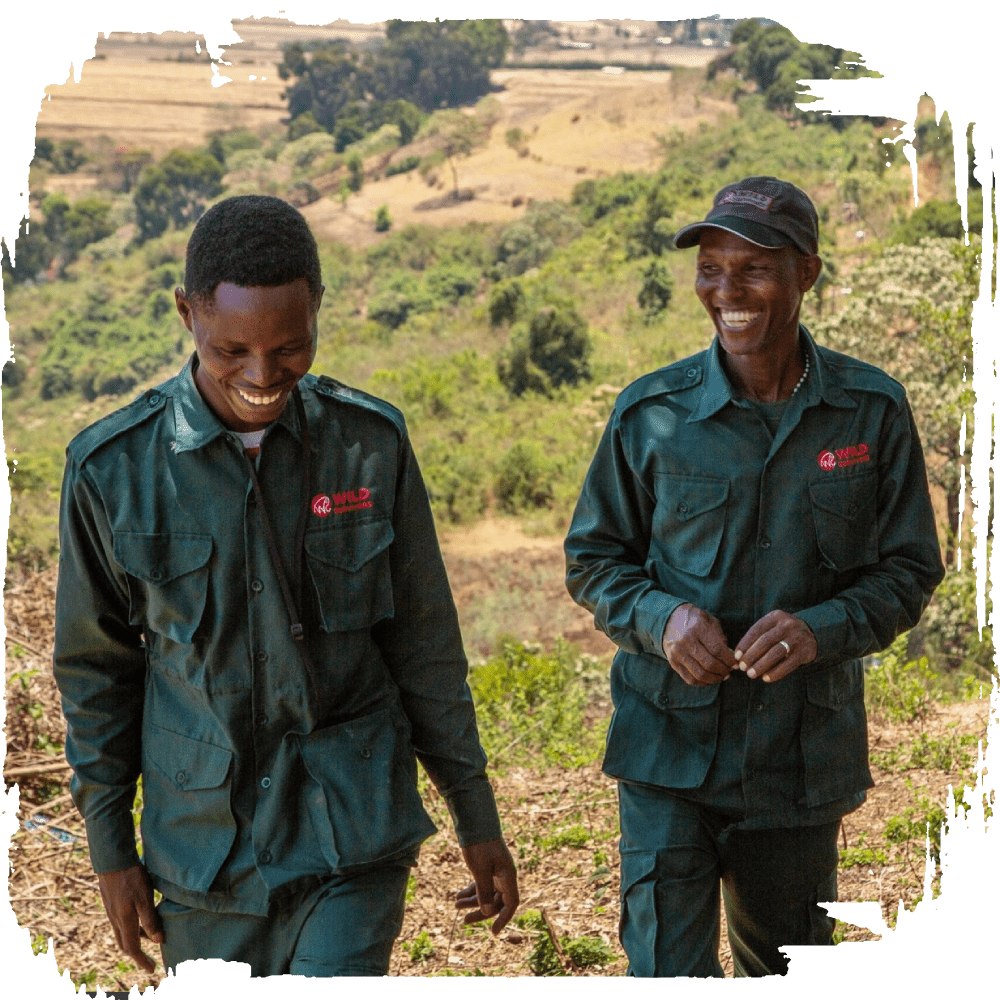
ABOUT US

WE ARE WILD SURVIVORS.
We are a locally led organisation working with local communities to create lasting solutions that protect farms, restore wild spaces, and keep elephants safe on their journeys.
WE WORK at the heart of one of the most urgent challenges in conservation today.
When people and elephants can live together, they thrive. We work across some of Tanzania’s most critical elephant landscapes - from the Ngorongoro highlands to the Serengeti borderlands and the forest corridors of Rukwa and Katavi, partnering directly with communities to co-create practical, nature-based solutions that reduce conflict, restore land, and strengthen livelihoods.
What we do

Our approach is grounded in the leadership of local people.
Especially women - who are building enterprises, protecting farms, and driving conservation from the ground up. We integrate science and community knowledge to measure impact over time. Our data systems are built to inform adaptation, local action, as well as policies - ensuring the evidence we gather is accessible and meaningful for the people it affects most. This process forms the foundation of the Wild Survivors Coexistence Framework.
How we do it
Human-elephant conflict is the biggest threat to elephants today.
Wild Survivors was launched by Francesca Mahoney in 2016, in response to the catastrophic elephant poaching epidemic and a rising conflict costing the lives of both elephants and people. This conflict occurs when elephants enter farmland that borders their natural habitat. Crops are destroyed, livelihoods are lost, and farmers are often forced to retaliate, with fatalities on both sides.
WHY WE DO IT

WHAT WOULD THE WORLD LOOK LIKE WITHOUT ELEPHANTS?
Without elephants, ecosystems would crumble. Elephants support the lives of other animals and keep their environment functioning, playing a critical role in maintaining habitat. They are engineers of biodiversity. This is evident across the semi-arid savannahs, woodlands, forests and shrub lands that make up the landscapes of Africa, where elephant populations still exist.
When landscapes lose elephants, ecosystems are at risk of collapse.
Video Gallery
Collaboration is at the heart of our work.

Like many of you, I am completely captivated by elephants. When I learnt that conflict with people was fast becoming their greatest threat, I knew we needed to act.
I founded Wild Survivors in 2016, to partner with local communities on nature-based methods such as beehive fences - that remove conflict, promote sustainable livelihoods and help communities and elephants to thrive in a balanced environment.
All our projects are donor funded - we couldn’t achieve this without you, thank you!”
- Francesca Mahoney, Founder & Executive Director, Wild Survivors
WILD SURVIVORS: FAQs
-
While researching the elephant poaching crisis in 2015, we identified an under-reported, growing challenge across Africa: Human-Elephant Conflict (HEC).
The urgency of this situation was felt in Tanzania, where 60% of elephants had been killed during the poaching epidemic.
Now the remaining elephants were facing a daily, often fatal battle, with people living alongside elephant habitat. This was a serious problem, in desperate need of a solution.
In 2016, Wild Survivors was formed with a mission to turn the conflict into sustainable and meaningful coexistence.
With 95% of our community collaborators vocalising the importance of protecting the wildlife corridor, establishing corridor conservation initiatives, such as beekeeping, that reduce competition for resources, and increase livelihood income and safety for people and wildlife, can create win-win results for achieving human-elephant coexistence.
Research (2017-2018)
Next, we formed a team on the ground in Tanzania, and we:
1) Mapped, tracked, consulted, engaged, listened, and collaborated.
2) We learnt from nature, simplified initiatives, created alignment, and made solutions accessible to remote communities, and scalable.
3) We honed our mission to protect the elephants, preserve their habitat, and empower local people.
Resolution (2019-2024)
Together with farmers, their families, and a newly formed women’s groups, we:
1) Built a 7.25km Beehive Fence to prevent elephant crop-raids along farmland bordering the Ngorongoro Crater forest – an HEC hotspot
2) Created a market chain for the honey and wax, making the community-managed solution self-sustainable
3) Established a Women & Bees Initiative that delivered training, equipment, a beehive apiary & our firstWomen’s Beekeeping Enterprise Hub
4) Initiated soil analysis with farmers to determine nutrient level and viability for crop diversification, elephant buffer crops (such as chilli), and the potential for improved water infiltration and carbon sequestration
5) Expanded our elephant corridor protection to include local wildlife monitoring, farmer reporting, data & research analysis, and wildlife safety workshops with schools
Impact
Through our community-centric approach, we have achieved far-reaching results that benefit people, wildlife and habitat – our triple win. This is in just a few years, on a shoestring budget. Our original Ngorongoro projects achieved:
Zero elephants killed or harmed
An increase in elephants using their migration corridor (Upper Kitete) to connect to key habitat zones
387% increase in collective farmer profits from 716 acres of farmland protected by the bees
91% decrease in elephant crop-raiding achieved with 68% beehive fence occupancy
49% decrease in farmer expenditure on traditional elephant deterrent methods (tractors, guards, torches)
210% profit for the Women’s Beekeeping Enterprise, from every honey harvest, with instant income to beehive fence farmers generated from the honey spot market managed by the women.
-
How HEC events unfold:
1) Wildlife habitat is lost or fragmented
2) Elephants are a migratory species. They face greater pressure to find food, water, social bonds and mating.
3) Farmland is crop-raided as elephants navigate a changing landscape
4) Livelihoods are destroyed
5) Retaliation killings & poacher recruitment ensues
-
Human-elephant conflict spans Tanzania and sub-Saharan Africa, But there is an opportunity to reverse the crisis.
Elephants are only using 17% of their potential habitat range across the African continent (Wall. J, 2021). By working with government agencies and local partners, we have identified hotspot areas where elephant habitat can be preserved, and communities can directly benefit from forest protection.
Our five priority regions in Tanzania are home to historic elephant corridors now under threat. These key areas are also the best honey-producing locations country-wide — and demand for this honey is far reaching. Tanzanian honey is known for its nutritional and medicinal benefits. The government’s target is to double production by 2025.
The opportunity set is far bigger than we thought. We need to scale up our enterprise, and that requires funding from our global community of passionate supporters.
MORE ABOUT US













